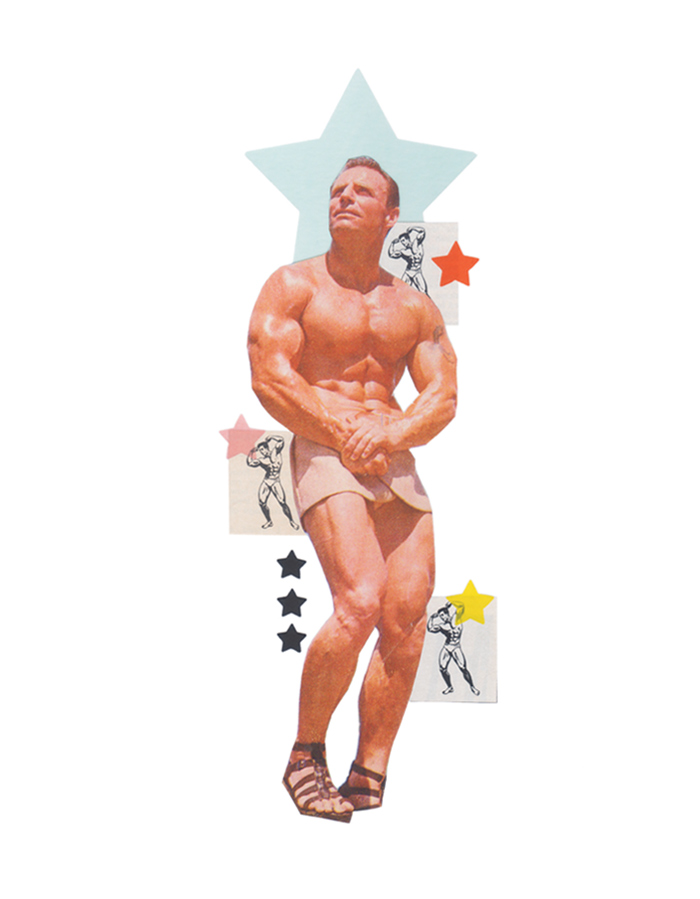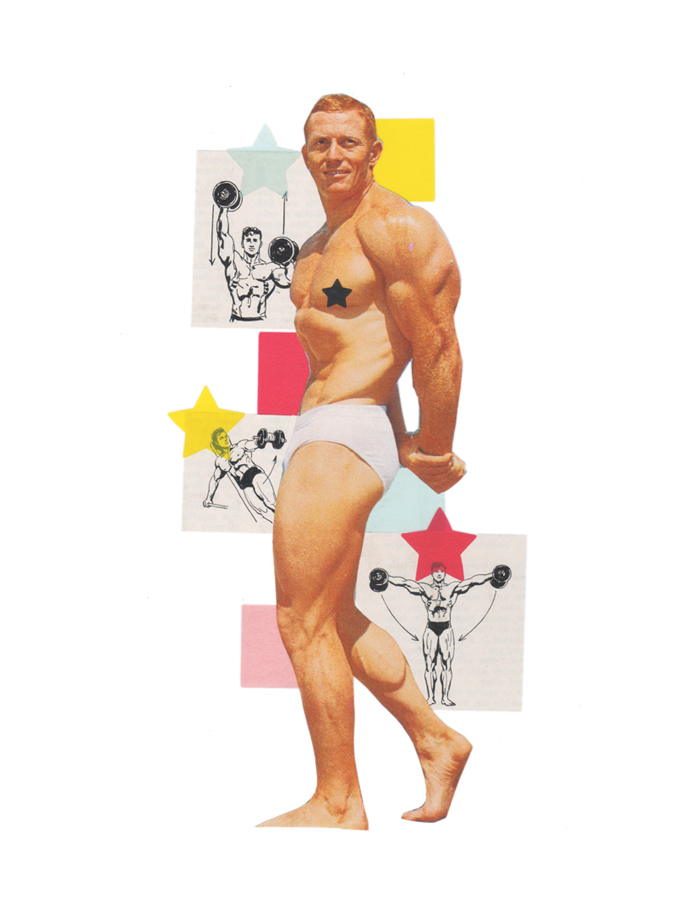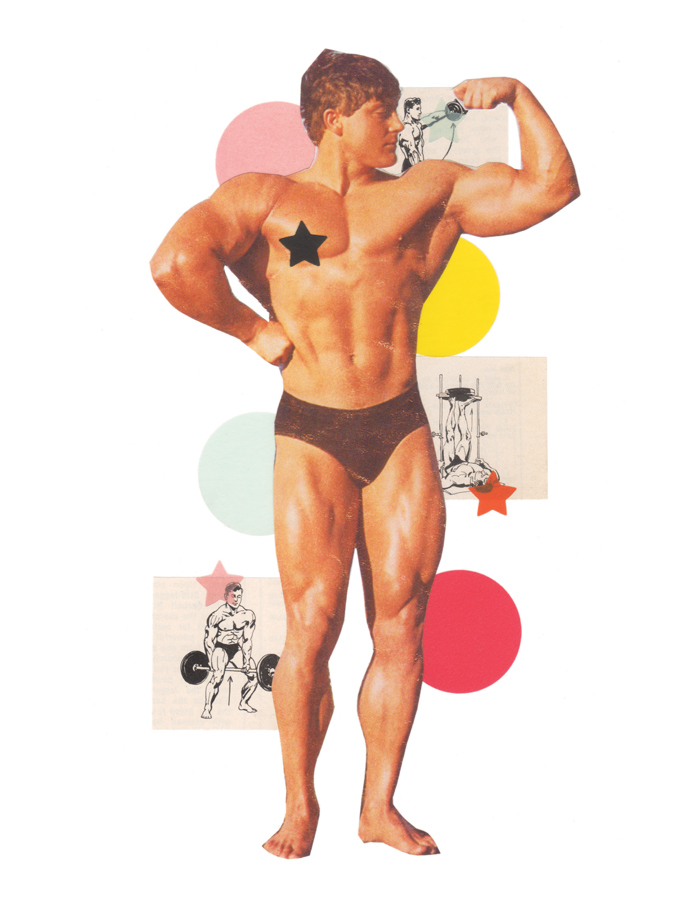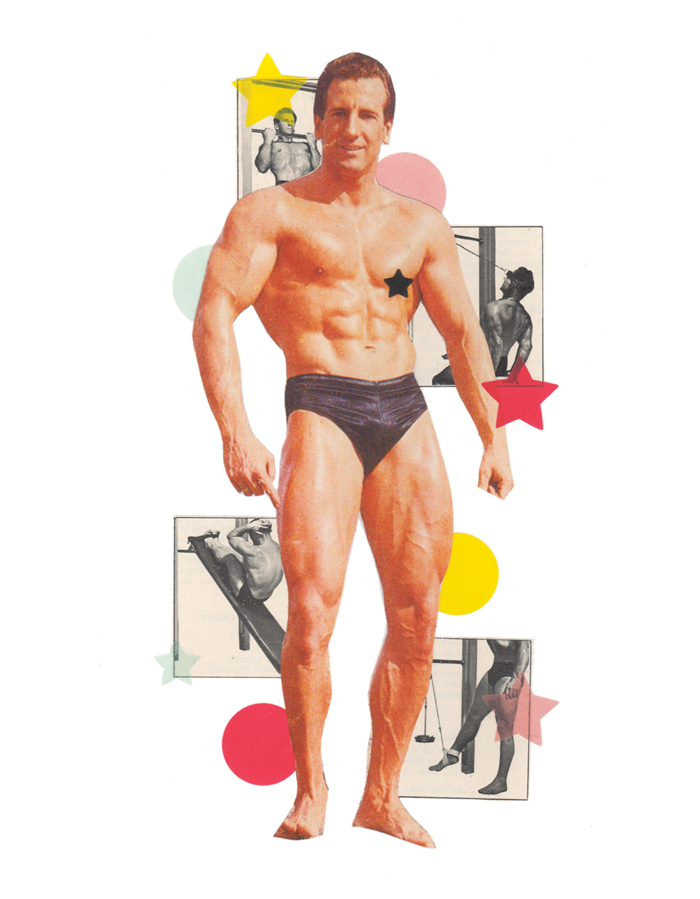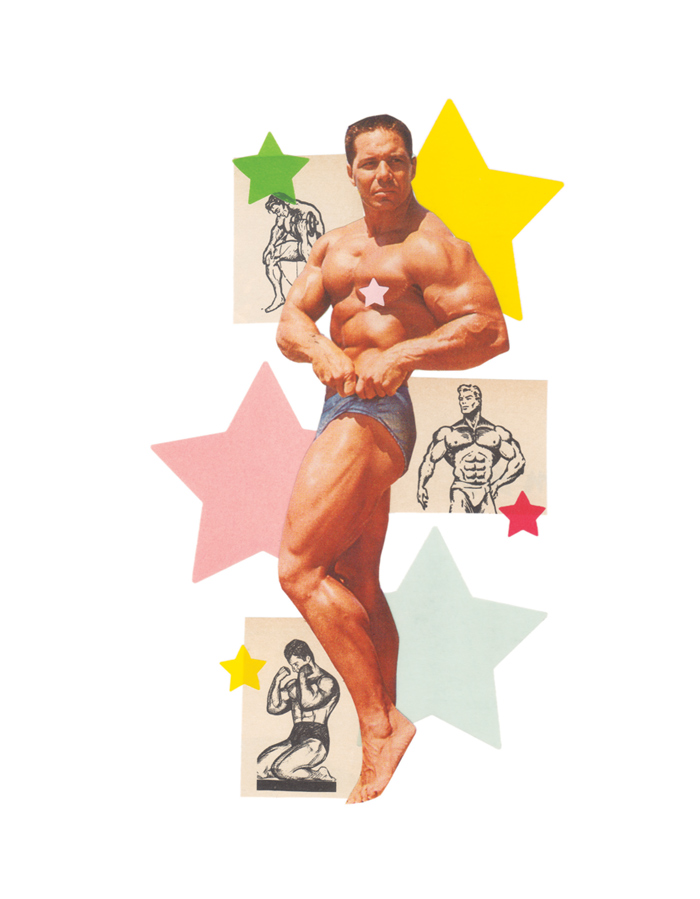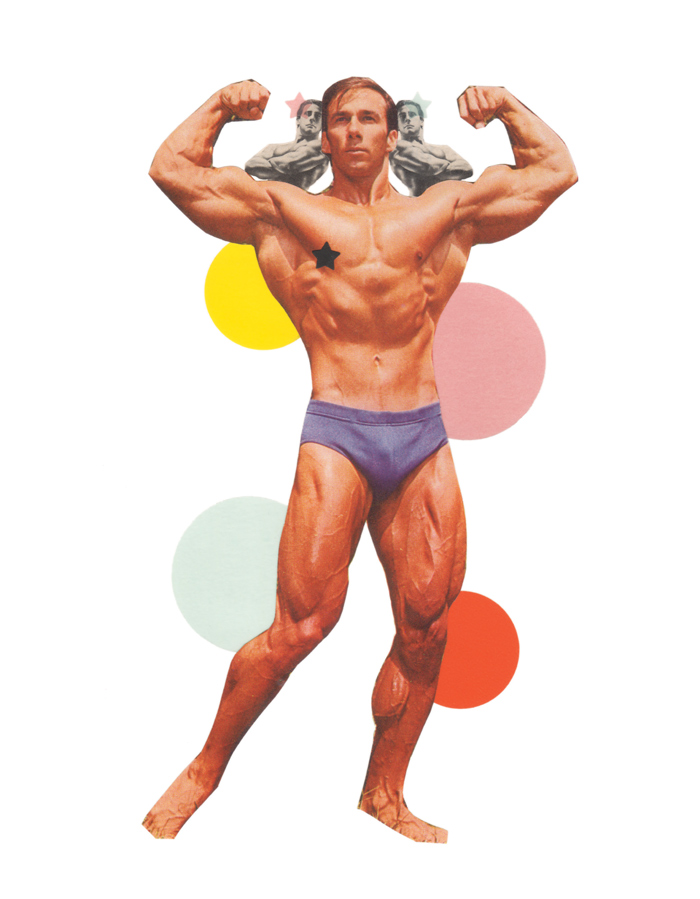Growing up in the 70s and 80s, bodybuilders were everywhere. From heroes in sword-and-sandal films to oiled-up gym rats in magazines, hunks were presented as the pinnacle of masculinity. All of the kids in school were tapped into it—myself included. Feel my muscles! Watch me lift this rock! I can do 50 pushups! Flexing in mirrors after gym class was a group sport.
As I grew older, I understood the “wink” directed at beefcake in the media. A gay sensibility of idealizing pumped up men in Speedos rubbed right up against the no pain, no gain grit of hypermasculine bros hittin’ the weights.
Finding the interrelatedness of queer and hetero male identities became a bit of a pastime for me—in magazines and comics, film and television, and music. (Imagine my delight when the Metal God, Rob Halford of Judas Priest, came out. All of the fist-pumping metal heads were really idolizing an opera-loving leather queen.)
That early interest in how men present—and are presented—explains my current fascination with dissecting images of midcentury-era men from a modern-day perspective. What happens when you take a loaded concept of male presentation out of context and reflect on its meaning with a 21st century vocabulary and perspective?
Beefcake spotlights the stars of the bodybuilding world from the 50s and 60s, coupled with eroticized illustrations that demonstrate how, you too, can become a hulky dude that some men want and want to be. Looking through these images, it’s hard not to notice how beefcake physiques and poses continue to play a role in how men want to present and be perceived. Skim through Instagram and any of the dating apps. Sure, the beefcake spectrum has expanded to include more body types—and the gay/hetero sensibilities have further blended—but the bar for idealized, hard-earned physical attractiveness is still influenced by midcentury muscle men. I haven’t grown bored of observing how people Xerox, emulate, and reshape, images and identities they consume in traditional and social media. Like pre-teen me, I have an innate desire to track the trajectory and evolution of what it means to be a man—and how those rules are celebrated, adopted, and challenged.
